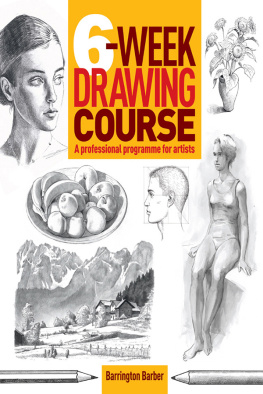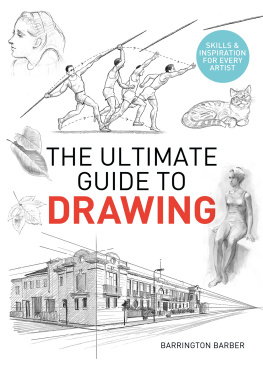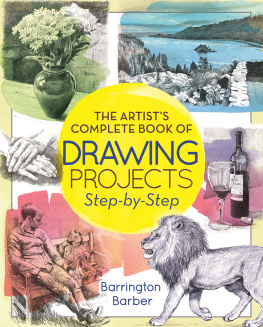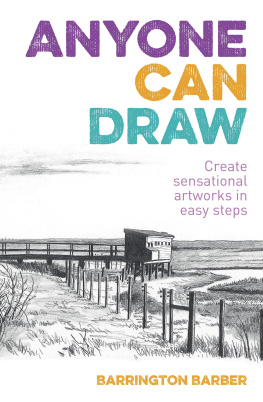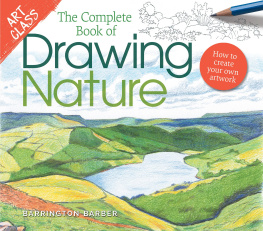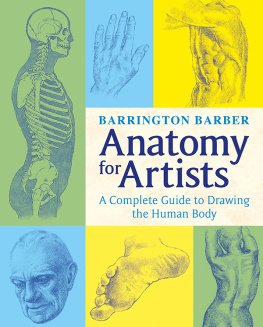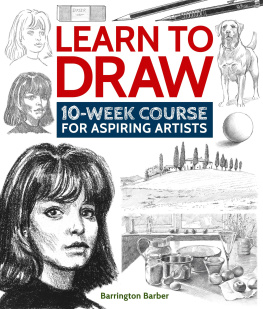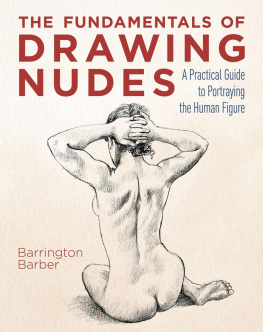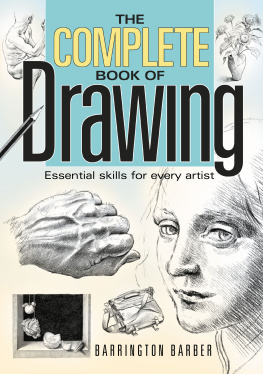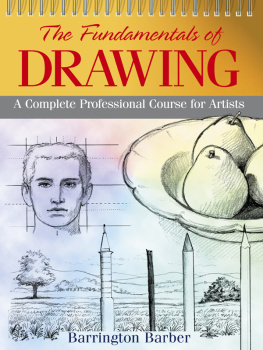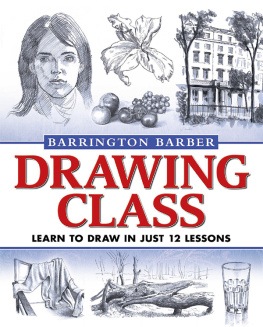All rights reserved. No part of this publication may be reproduced, stored in a retrieval system, or transmitted, in any form or by any means, electronic, mechanical, photocopying, recording or otherwise, without prior written permission in accordance with the provisions of the Copyright Act 1956 (as amended). Any person or persons who do any unauthorised act in relation to this publication may be liable to criminal prosecution and civil claims for damages.
Introduction
L earning to draw is not difficult everybody learns to walk, talk, read and write at an early age, and discovering how to draw is easier than any of those processes! Drawing is merely making marks on paper which represent some visual experience. All it takes to draw effectively is the desire to do it, a little persistence, the ability to observe and a willingness to take time to correct any mistakes. This last point is very important as mistakes are not in themselves bad they are opportunities for improvement, as long as you always put them right so that you will know what to do the next time.
Many of the exercises in this book incorporate the time-honoured methods practised by art students and professional artists. If these are followed diligently, they should bring about marked progress in your drawing skills. With consistent practice and regular repetition of the exercises, you should be able to draw competently and from there you will see your skills burgeon. Dont be put off by difficulties along the way, because they can be overcome with determination and a lot of practice and this means you are actively learning, even if it may seem a bit of a struggle at times. The main thing is to practise regularly and keep correcting your mistakes as you see them. Try not to become impatient with yourself, as the time you spend altering your drawings to improve them is time well spent.
Work with other students as often as you can, because this also helps your progress. Drawing may seem like a private exercise, but in fact its a public one, because your drawings are for others to see and appreciate. Show your work to other people and listen to what they say; dont just accept or reject their praise or criticism, but check up on your work to see if they have seen something you havent. If other peoples views arent very complimentary, dont take offence. Neither praise nor criticism matters except in so far as it helps you to see your work more objectively. Although at first a more experienced artists views are of great value, eventually you have to become your own toughest critic, assessing exactly how a drawing has succeeded and how it has not worked.
Talk to professional artists about their work if you get the chance. Go to art shows and galleries to see what the competition is like, be it from the old masters or your contemporaries. All this experience will help you to move your work in the right direction. Although working through this book will help you along your path to drawing well, it is up to you to notice your weaknesses and strengths, trying to correct the former and building on the latter.
Steady, hard work can accomplish more than talent by itself, so dont give up when you are feeling discouraged; drawing is a marvellously satisfying activity, even if you never get your work into the Royal Academy or the Tate Modern. Enjoy yourself!


Materials and methods
Any medium is valid for drawing. That said, some mediums are more valid than others in particular circumstances, and in the main their suitability depends on what you are trying to achieve. Try to equip yourself with the best materials you can afford; quality does make a difference. You dont need to buy all the items listed below from the outset, and indeed it is probably wise to experiment gradually as you gain in confidence.
Start with the range of pencils suggested, and when you feel you would like to try something different, then do so. You can use any of the materials listed below to follow the projects in this book. Be aware that each material has its own identity, and you have to become acquainted with its individual facets before you can get the best out of it. However, once you are at ease with drawing in pencil, you will enjoy becoming more ambitious.
Pencil
The simplest and most universal tool of the artist is the humble pencil, which is very versatile. It ranges from very hard to very soft and black (H, HB, B, 2B, and so on) and there are differing thicknesses. Depending on the type you choose, pencil can be used very precisely and also very loosely.
You should equip yourself with at least three grades of pencil, such as an HB (average hardness and blackness), 2B (soft and black) and 4B (very soft and black).
Carbon pencil
This can give a very attractive, slightly unusual result, especially the dark brown (sepia), terracotta or sanguine versions. The black version is almost the same in appearance as charcoal (see ), but doesnt offer the same facility to erase it easily. If you are using this type, start off very lightly in case you make mistakes.
For working on a toned surface, you might like to try white carbon pencil.

Pencils: HB B 2B 4B

White carbon pencil

Cont charcoal pencil

Graphite pencils

Fine line pen

Fine nib push pen
Graphite
Graphite pencils are thicker than ordinary pencils and come in an ordinary wooden casing or as solid graphite sticks with a thin plastic covering. The graphite in the plastic coating is thicker, more solid and lasts longer, but the wooden casing probably feels better to use. The solid stick is very versatile because of the breadth of the drawing edge, which enables you to draw a line 6mm (in) thick, or even thicker, and also very fine lines. Graphite also comes in various grades, from hard to very soft and black.

